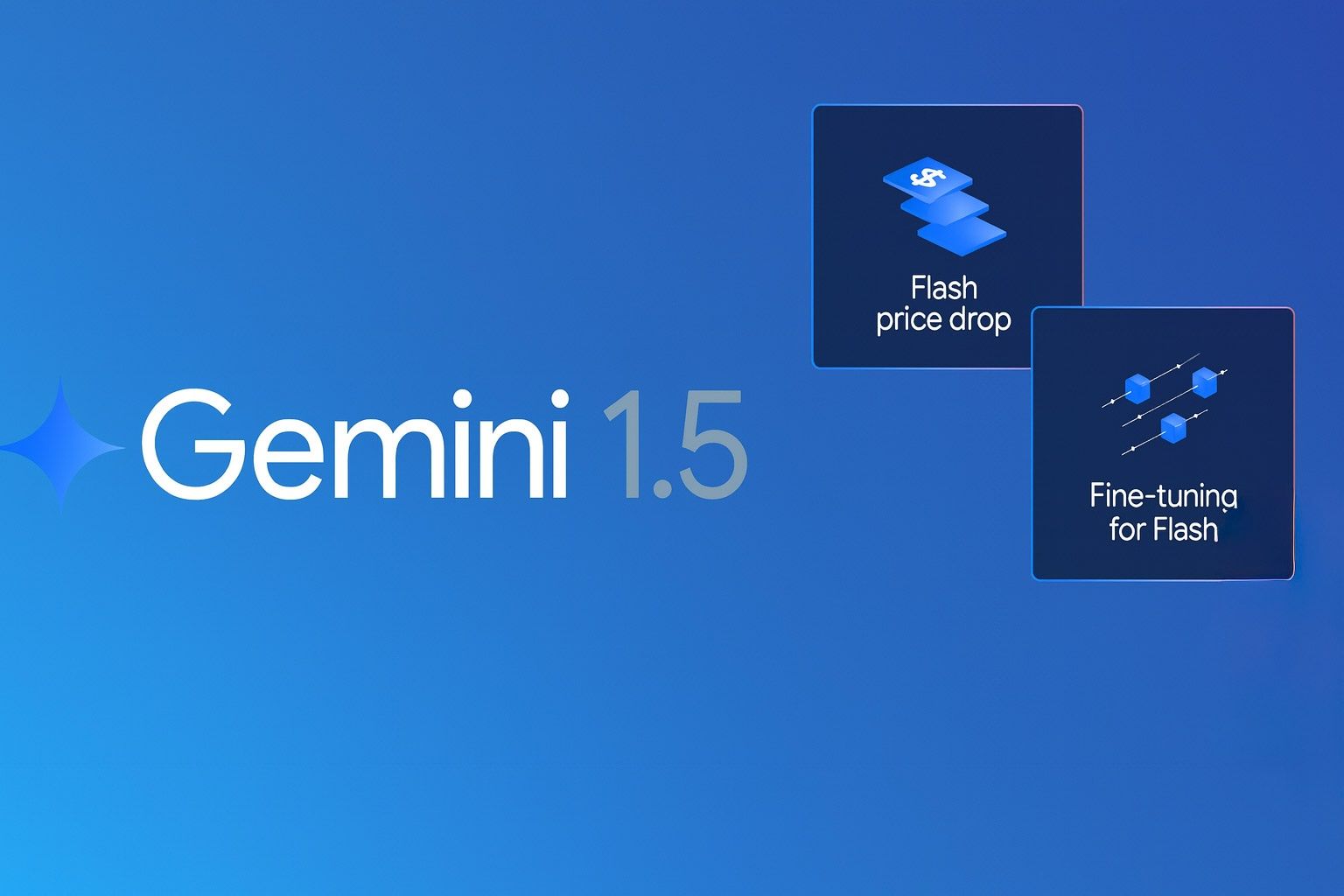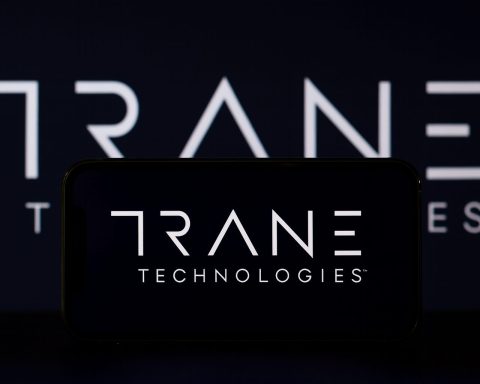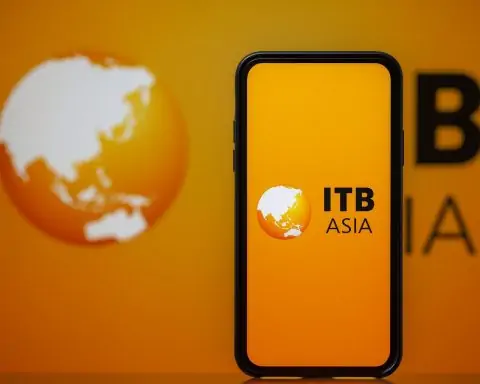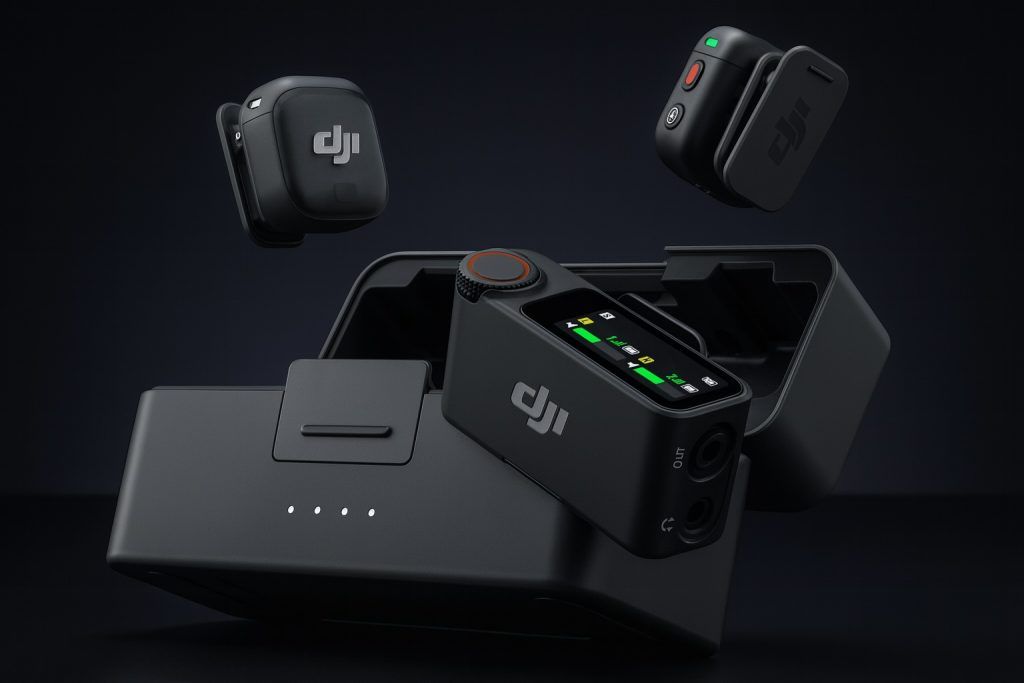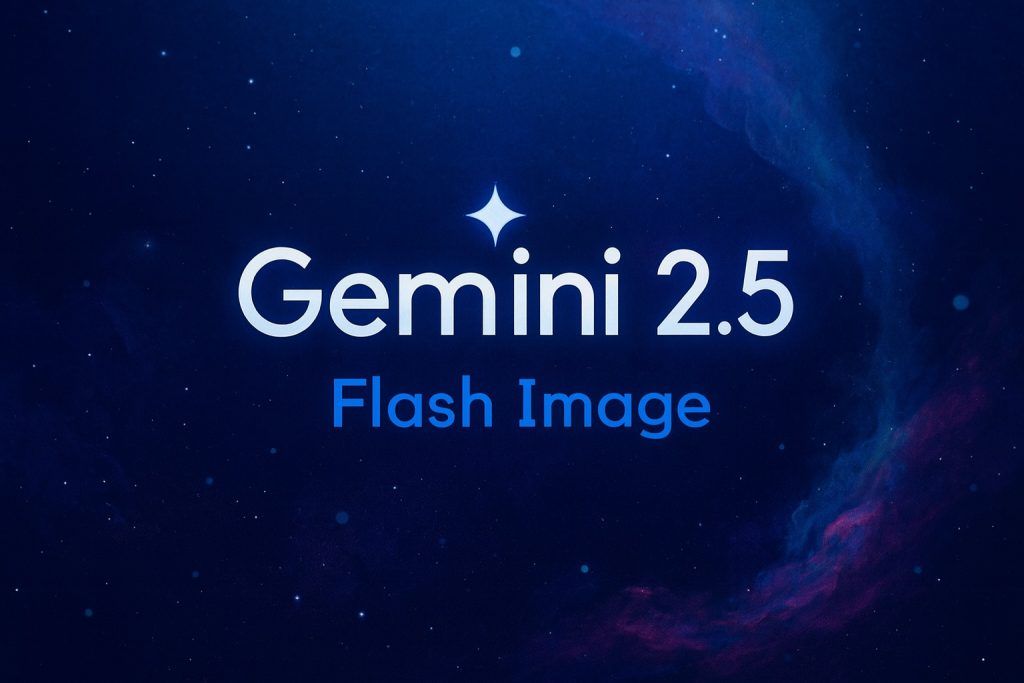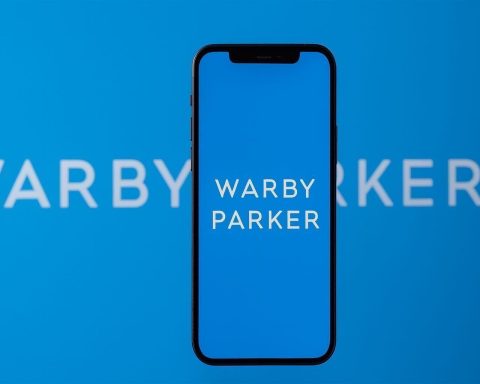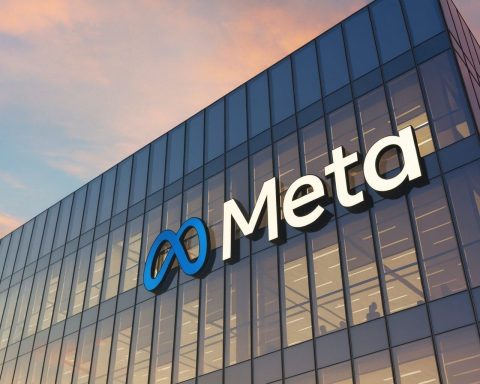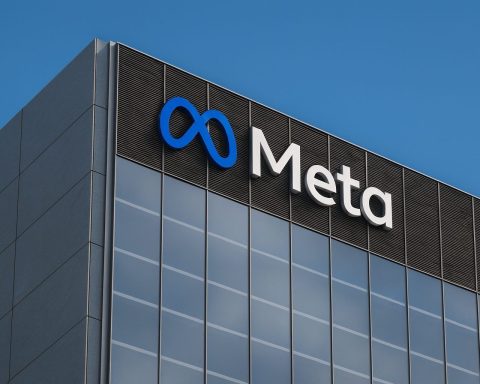- Google’s Next-Gen AI: Gemini 1.5 Flash is an upgraded AI model from Google DeepMind, built for speed and efficiency. It delivers faster responses and “across-the-board improvements in quality and latency” over previous versions [1], thanks to a highly optimized architecture.
- Long Memory (Context): It boasts a groundbreaking long-context window – able to handle up to 1 million tokens of input (the longest of any major model) [2] [3]. This means Gemini 1.5 Flash can remember very large documents or conversations, far beyond the 8K–32K token limits of models like GPT-4.
- Multimodal Intelligence: Unlike typical chatbots, Gemini 1.5 Flash is multimodal – it can analyze images, audio, videos, and PDFs in your prompt (not just text) and then generate text or code in response [4]. For example, you can show it a chart or play an audio clip and ask for an explanation.
- Higher Quality Responses: Google reports major gains in reasoning and understanding. Gemini 1.5 Flash produces more accurate, context-aware answers with fewer mistakes. Users notice “especially noticeable improvements in reasoning and image understanding” over past models [5], and new features help reduce AI “hallucinations” (factually incorrect outputs).
- Widespread Access & Low Cost: Launched for public use in mid-2024, it’s available free in Google’s Gemini app (formerly Bard) and via API. Google slashed usage costs by over 70% in August 2024, making it far cheaper for developers than rival APIs [6]. “1.5 Flash is our most popular model for high-volume, low-latency use cases,” Google noted, after cutting input costs to $0.075 per million tokens [7] (a tiny fraction of OpenAI’s GPT-4 pricing).
- Topping Benchmarks: In evaluations, Gemini 1.5 series has outperformed other leading AI models. An experimental Gemini 1.5 Pro model claimed the #1 spot on the LMSYS Chatbot Arena leaderboard, edging out OpenAI’s GPT-4 and Anthropic’s Claude-3.5 [8]. Google’s team celebrated it as “the strongest, most intelligent Gemini we’ve ever made.” [9] It also led a vision (image understanding) benchmark [10], underscoring its multimodal strength.
- Real-World Demos: Google has been rapidly integrating Gemini into products. By 2025, Google Search’s AI mode is powered by Gemini (with an upgrade to version 2.5 in August) for interactive queries [11]. Demos at Google I/O showed Gemini handling in-car voice commands and real-time language translation in a Volvo, and a Gemini-powered code assistant helps developers with step-by-step coding guidance [12] [13]. With over 400 million users on the Gemini app as of August 2025 [14], Google’s AI is reaching a massive audience.
What is Google Gemini 1.5 Flash?
Gemini 1.5 Flash is a cutting-edge large language model (LLM) and part of Google’s Gemini AI family. Announced in 2024 as an upgrade to Google’s Gemini 1.0, it represents the company’s effort to leap ahead in the AI race. Google CEO Sundar Pichai described Gemini 1.5 as a “next-generation model” that achieved comparable quality to Gemini 1.0 Ultra while using less compute [15]. In other words, 1.5 Flash is more efficient – it can match the prowess of the previous flagship model but runs faster and cheaper.
The “Flash” moniker highlights its focus on speed. This model was “built for speed”, as a Google blog image touted, alongside its “4× context window” and “improved response quality” [16]. Initially rolled out to developers as a Pro version in early August 2024, Gemini 1.5 Flash was soon made the default model for all users of Google’s AI chat app (free tier) to provide faster, smarter responses [17]. Amar Subramanya, Google’s VP of Engineering for Gemini, noted that people love Gemini for saving time, so the team “upgraded our free-tier experience to Gemini 1.5 Flash” to make it even more responsive [18].
Purpose and Uniqueness: Gemini 1.5 Flash is designed to be a general-purpose AI assistant that you can chat with or use for tasks like writing, coding, researching, and content creation. Its standout features include:
- Ultra-Long Context Understanding: It can handle very large inputs – up to 1,048,576 tokens (around 800,000+ words) of text in a prompt [19]. This is an unprecedented memory length; by comparison, most AI models struggle beyond a few thousand words. Google achieved this via a “breakthrough in long-context understanding” [20], likely leveraging advanced attention algorithms (the name “Flash” is suggestive of the efficient flash attention method). In practical terms, Gemini 1.5 Flash can ingest entire books, lengthy reports, or hours of transcripts and still reason about them coherently. Sundar Pichai highlighted that it “achieves the longest context window of any large-scale foundation model yet,” consistently handling up to 1 million tokens [21]. This opens up new possibilities – e.g. you could ask it to summarize a 500-page PDF or debug a massive codebase in one go.
- Multimodal Capabilities: Gemini 1.5 Flash isn’t limited to text. It natively accepts images, audio, video, and PDF files as part of your prompt [22]. For example, you can show a photograph or a chart and ask questions about it, or supply an audio clip for transcription or translation. The model will incorporate those inputs when generating a response (which is usually text or code). This multimodal understanding was a big leap for Google’s model – it means Gemini can serve as an “all-in-one” AI that sees and hears, not just reads. Google notes the model supports up to 3,000 images per prompt and lengthy audio/video (audio up to ~8.4 hours, video up to 1 hour) [23] [24]. Early on, users observed significant improvements in image reasoning – Gemini 1.5 Flash can describe images in detail or explain their content more accurately than previous bots [25]. While models like GPT-4 introduced image input capabilities, Gemini expanded on this by also handling audio and even video files directly.
- Fast and Low-Latency Responses: As the name suggests, 1.5 Flash responds very quickly. It was optimized for real-time interaction, with Google calling it a “workhorse” model for streaming results [26]. Third-party tests confirm its snappiness – in one case, the AI platform Langbase found Gemini 1.5 Flash had about 28% faster response time than comparable models [27]. They also measured a high throughput of ~131 tokens per second, about 78% higher throughput than peers, meaning Gemini can generate more words per second when handling lots of requests [28]. This speed is critical for user experience: whether you’re using it in chat or an application, answers feel near-instantaneous and fluid. Internally, Google achieved this via engineering optimizations across model architecture and inference infrastructure [29]. Notably, 1.5 Flash was made more efficient to serve, allowing faster output without needing a supercomputer for each interaction.
- Quality and Reasoning Ability: Speed didn’t come at the cost of intelligence. Gemini 1.5 Flash shows strong performance on complex tasks. Demis Hassabis of Google DeepMind noted it “delivers dramatically enhanced performance… a step change in our approach, building upon research and innovations across nearly every part of our model development” [30]. It excels in areas like logical reasoning, coding, math, and multilingual understanding. In fact, Gemini 1.5 (Pro variant) was shown to surpass GPT-4 on certain benchmarks – it ranked #1 on an external chat leaderboard, with an Elo score slightly above GPT-4’s [31]. Observers report it handles technical queries and “complex prompts” very well [32]. Early users described the model as “insanely good” at understanding instructions [33]. Furthermore, Google has been actively working to reduce hallucinations and improve factual accuracy in Gemini. In the chat interface, 1.5 Flash introduced features like “double-check”, where the AI will verify its answers via Google Search and highlight which statements it found support for [34]. It also now provides inline citations/links for factual prompts (much like this report is doing!), making it easier to trust and verify Gemini’s responses [35]. These measures address a common weakness of big language models and make Gemini 1.5 more reliable for tasks like research.
In summary, Gemini 1.5 Flash is a versatile, high-performance AI model. It’s unique in combining blazing-fast response speed, massive context memory, and multi-modal understanding – all while maintaining state-of-the-art language capabilities. This combination makes it well-suited for a wide range of applications, from an AI assistant that can hold long, nuanced conversations to a developer tool that ingests whole code repositories or a research aide that analyzes lengthy reports.
Recent News and Milestones (as of August 28, 2025)
Since its introduction, Gemini 1.5 Flash has seen rapid improvements and adoption. Here are the latest highlights up to late August 2025:
- Free Access and Global Rollout: Google wasted no time in putting Gemini 1.5 Flash into users’ hands. By July 2024, they upgraded the free version of Google’s AI chat (formerly known as Bard, now the Gemini app) to use 1.5 Flash for everyone [36]. This meant millions of users instantly got faster, better answers. Google also expanded Gemini’s availability to over 40 languages and 230 countries [37], and even opened access to teens (with parental safeguards) later on [38]. By 2025, the dedicated Gemini mobile app had over 400 million monthly active users and was spreading globally [39], showing how quickly the public embraced this AI helper.
- Enterprise and Developer Updates: On the developer side, Google made Gemini 1.5 Flash a centerpiece of its AI platform. It’s available via the Gemini API in Google Cloud’s Vertex AI, and through the Google AI Studio interface for experiments. In August 2024, Google announced a major price reduction – cutting token costs for 1.5 Flash by ~75% – to encourage wider use [40]. “To make this model even more affordable… input price [is now] $0.075 per 1M tokens and output $0.30 per 1M tokens,” the product managers wrote [41]. This pricing is orders of magnitude cheaper than OpenAI’s flagship at the time, signaling Google’s aggressive push. They also enabled fine-tuning for Gemini 1.5 Flash in 2024, allowing developers to customize the model with their own training data [42]. By mid-2025, Gemini 1.5 Flash had become the most popular choice for many building AI apps, thanks to its speed and low cost. Google even partnered to integrate it beyond Google Cloud – for example, Elastic announced support for running Google’s models (like Gemini 1.5 Flash) in its Elasticsearch platform [43], showing industry adoption.
- Benchmark Dominance: In terms of benchmarks and evaluations, Gemini 1.5 has proven its mettle. When Google released an updated 1.5 Pro model (version “0801”) for testing, it “ranked #1 on the LMSYS leaderboard for both text and multi-modal queries.” [44] This leaderboard (run by an academic group for chatbot performance) had Gemini beating out notable rivals. VentureBeat reported “Gemini 1.5 Pro [took] the top spot… ahead of OpenAI’s GPT-4 and Anthropic’s Claude-3.5”, with an Elo rating of 1300 vs 1286 for GPT-4 [45]. It also secured the #1 position on the vision leaderboard for image-based questions [46]. In practical exams, Gemini 1.5 performs on par with other top models – for instance, one medical AI evaluation found Gemini 1.5 scored ~85.9% on a test, “similar to GPT-4” [47]. All this indicates Google has closed the quality gap with the previously dominant OpenAI systems. Google’s AI researchers themselves are proud of the progress; one key engineer called 1.5 Pro “the strongest, most intelligent Gemini we’ve ever made.” [48] These benchmark wins in 2024 set the stage for Google to declare that Gemini was ready to take on any competitor.
- Product Integrations and Demos: Google has been busy embedding Gemini 1.5 (and its successors) into a variety of products:
- In Google Search, the experimental “AI mode” that gives conversational answers is powered by Gemini. Initially U.S.-only, this AI mode expanded to 180 countries by Aug 2025 [49] [50]. Google announced it upgraded Search’s underlying model to “Gemini 2.5” in August 2025 for even faster, better answers [51], underscoring that Gemini’s evolution continues. Notably, by this time Google allowed teens to use Search’s AI features without signing in, implying confidence in Gemini’s safety [52].
- In Android, Google is replacing its old Assistant with Gemini’s AI. A demo at Google I/O 2025 showed a Volvo car using Gemini to handle in-car voice tasks – drivers said “Hey Google, let’s talk,” invoking a Gemini Live assistant that could have free-form conversations, answer complex questions, and even translate messages in real-time across 40+ languages [53] [54]. This highlights Gemini 1.5 Flash’s speed and low latency; a slow model could never handle live dialogue in a car. Google says select cars with Android Auto will get this upgrade in late 2025 [55].
- For developers, Google introduced tools like the Gemini CLI (command-line interface) and code assistants. In mid-2025, they even open-sourced a Gemini CLI that gave free test access to a Gemini 2.5 model with the full 1M token context via the terminal [56]. And the Gemini Code Assist 2.0 plugin for IDEs (VS Code/IntelliJ) launched in August 2025, providing AI help with coding tasks (using the model’s long context to understand entire projects) [57].
- We also see creative uses: Google showcased a “Pixel Journey” web app that used Gemini to narrate the history of Pixel phones (mixing text and images), and monthly “Gemini Drop” updates that add features like image generation/editing in the Gemini app [58]. All these demos reinforce that Gemini 1.5 Flash is not just a lab project – it’s everywhere in Google’s ecosystem, from search to smartphones to cloud services.
- Ethics and Safety: Alongside capability, Google emphasizes responsible AI. When Gemini 1.5 was unveiled, it underwent extensive safety testing and red-teaming [59] [60]. Features like the aforementioned “double-check” mode and related-content links were introduced to combat misinformation [61]. Google also expanded access to younger users with special safeguards and an AI literacy guide for teens [62]. The focus is on balancing innovation with trustworthiness. (Notably, Anthropic’s Claude has a reputation for being very cautious, so Google is likely trying to match that bar while still delivering powerful performance.)
- Transition to Gemini 2.0+: By late August 2025, Google is already moving beyond 1.5 Flash. On August 6, 2025, Google announced Gemini 2.0 Flash (Experimental) – the next major model aimed at more “agentic” AI behavior [63]. Gemini 2.0 continues the trend with native tool use, the same 1M token context, and even the ability to generate images (Gemini 2.5 Image model) as a built-in feature [64] [65]. While those advances are on the horizon, they build directly on the foundation laid by Gemini 1.5 Flash. In fact, 1.5 Flash is now considered a legacy model in Google’s documentation [66] – new projects are encouraged to use 2.0 Flash. Still, as of August 28, 2025, Gemini 1.5 Flash remains widely used and is a good representation of Google’s state-of-the-art up to early 2025. It’s the version that made Gemini a household name.
Gemini 1.5 Flash vs. Other AI Models in 2025
How does Google’s Gemini 1.5 Flash stack up against its main competitors? We’ll compare it to OpenAI’s next-gen GPT (GPT-5, and by extension GPT-4), Anthropic’s Claude, Meta’s Llama 3, the MidJourney V7 image model, and Mistral’s AI models. Each of these has different strengths, so we’ll focus on key aspects like speed, latency, memory (context handling), multi-modal abilities, efficiency, and affordability.
OpenAI GPT-5 (and GPT-4)
GPT-5 – the much-anticipated successor to OpenAI’s GPT-4 – is (as of late August 2025) not yet publicly released. OpenAI has kept details under wraps, but Reuters reported on August 6, 2025 that GPT-5’s release was “imminent” [67]. Early testers were impressed by its coding and problem-solving, but noted “the leap from GPT-4 to GPT-5 is not as large as from GPT-3 to GPT-4.” [68] In other words, GPT-5 is expected to be an evolution, not a revolution. OpenAI’s leadership hinted it will focus on refinement: fewer hallucinations, better accuracy, perhaps larger knowledge updates, but not a dramatic jump in general intelligence.
GPT-4, launched in 2023, has been the benchmark for quality. It excels at complex reasoning, creativity, and has proven itself by passing difficult exams (GPT-4 famously reached the top 10% on the bar exam) [69]. However, GPT-4 has some limitations that Gemini 1.5 Flash specifically aimed to overcome:
- Speed: GPT-4, especially the 32K-context version, can be slower in response due to its size. Many users have noted a delay when GPT-4 is thinking through complex queries. Gemini 1.5 Flash, in contrast, is tuned for low latency – delivering answers snappily. Google’s model streams output quickly, which is crucial for real-time use cases (like voice assistants). OpenAI has made optimizations too (e.g., GPT-3.5 Turbo is quite fast), but GPT-4’s heavyweight nature means Gemini Flash likely holds an edge in responsiveness. For instance, in one comparison, Gemini Flash had ~28% faster response time than a “comparable model” (we can infer GPT-4 or similar) [70].
- Context Length: GPT-4’s maximum context window is 32,768 tokens (about 25,000 words) in its extended version. That was groundbreaking in 2023, but Gemini 1.5’s 1,000,000+ token capacity dwarfs it [71]. Even GPT-5 is only rumored to approach similar context lengths – leaks suggested it might support up to 1 million tokens of input [72], but we’ll see if that becomes reality. Until GPT-5 is out, Gemini holds the crown for memory. This means Gemini can ingest documents 30× longer than GPT-4 can, enabling use cases GPT-4 struggles with (e.g. analyzing entire books or multi-hour meeting transcripts in one go).
- Multi-modality: GPT-4 is multimodal in a limited way – it can accept images as input (and OpenAI’s ChatGPT can now even speak and listen via integrated speech modules). But GPT-4 does not directly process audio or video; it needs separate components (like Whisper for audio transcription) before feeding text to GPT-4. Gemini 1.5 Flash handles image, audio, and video inputs natively in one model [73]. For example, you could give Gemini an MP3 file and ask for a summary – it will transcribe and summarize internally. This all-in-one approach is quite novel. GPT-5 will likely expand multimodal abilities further (perhaps better visual reasoning, maybe rudimentary video understanding), but details aren’t public. For now, Gemini 1.5’s breadth of input types is a differentiator. However, note that image generation is something GPT-4 can’t do and neither can Gemini 1.5 Flash – they only understand visuals. (Google’s newer Gemini 2.5 Image model is addressing generation, akin to DALL-E or MidJourney, but that’s separate from 1.5 Flash).
- Reasoning & Quality: Both GPT-4 and Gemini 1.5 are top-tier here. On many benchmarks (math problems, coding, knowledge tasks), they likely trade blows. There isn’t a single metric to declare one universally “smarter.” That said, the Chatbot Arena results indicate Gemini 1.5 (Pro) slightly outperformed GPT-4 (specifically a variant called “GPT-4o”) in head-to-head comparisons by thousands of users [74]. This suggests that by mid-2024, Google closed the quality gap or even pulled ahead in the eyes of evaluators – a significant achievement, given GPT-4’s reputation. We should acknowledge that GPT-4 still has some advantages: it has been extensively fine-tuned for factual knowledge and might handle certain niche domains better due to training data differences. But by Aug 2025, any quality gap is narrow. GPT-5, when released, might push the envelope again with improved capabilities (e.g. better common-sense reasoning, more up-to-date training data, etc.), so Google will have to keep iterating (and indeed they are, with Gemini 2.0 in progress).
- Efficiency & Cost: OpenAI’s models are proprietary and offered via paid APIs or subscriptions. GPT-4 usage is relatively expensive – for instance, ~$0.06 per 1000 tokens output. In contrast, Google’s aggressive pricing for Gemini 1.5 Flash (roughly $0.000075 per 1000 tokens input after the August 2024 cut [75]) makes it dramatically cheaper for large workloads. OpenAI has not matched that kind of price drop as of 2025 (though open-source competition pressures them in other ways). In terms of running the model, GPT-4 is very large (estimates range up to 1.5 trillion parameters, though OpenAI never confirmed). Google hasn’t disclosed Gemini’s size, but emphasized that 1.5 Flash is more efficient – achieving 1.0 Ultra-level performance with fewer resources [76]. This could mean it’s smaller or just better optimized. The bottom line: Gemini 1.5 Flash is cheaper to operate for Google, and those savings have been passed to users to some extent. GPT-5’s training reportedly hit some snags with data and hardware limits [77], whereas Google’s approach has been to innovate on model design (like the new architectures enabling long context) rather than only “scaling up” blindly. Over time, both giants are trying to make models more efficient, but as of 2025, Google’s pricing and latency advantages are notable.
Verdict: For now, Gemini 1.5 Flash and OpenAI’s GPT-4 are roughly peers in overall capability, with Gemini pulling ahead in speed, memory, and multimodal flexibility, and GPT-4 known for slightly more maturity in some advanced reasoning tasks (though benchmarks show it’s a close call). GPT-5 remains a wild card – expected to improve on GPT-4, potentially matching Gemini’s context length and offering its own upgrades. If GPT-5 does launch (rumors pointed to late Q3 or Q4 2025), it will certainly be a direct competitor to Gemini’s next versions. As one VC observer noted, “ever since [GPT-4], there’s been enormous anticipation for GPT-5… The hope is GPT-5 will unlock AI applications beyond chat into fully autonomous task execution.” [78] That hints that OpenAI might focus on letting GPT-5 not just respond to queries but take actions or manage goals (the “agent” paradigm). Google is thinking along similar lines with Gemini 2.0 and its tool-use/agentic abilities. So the competition is fierce. But at the moment of August 2025, Gemini 1.5 Flash stands as an equal – if not slight leader – in the AI quality race, and decisively wins on context length and input modality support.
MidJourney V7 (Image Generation)
It might seem odd to compare Gemini 1.5 Flash – primarily a text-based AI assistant – with MidJourney V7 – which is an image generation model. They serve different purposes: Gemini generates text (or code) given text/image inputs, while MidJourney generates images given text descriptions. However, in the realm of multi-modal AI, these models can complement or compete in certain tasks, particularly when we talk about creating visual content versus understanding it.
MidJourney is one of the leading AI image synthesis platforms. Version 7 of MidJourney was released in April 2025 (becoming the default model by June 2025) [79]. MidJourney V7 made significant strides in image quality and prompt fidelity:
- It handles text prompts with stunning precision, producing more coherent and detailed images than prior versions [80].
- V7 specifically improved rendering of tricky details that often plagued AI art – for example, it produces much more realistic human hands, faces, and objects without the strange distortions older models sometimes gave [81]. Text within images (like signage) also became more legible. The MidJourney team notes richer textures and more consistent details overall.
- New features in V7 include a “Draft Mode” for quicker, rough generations and an “Omni Reference” system that allows combining multiple image references and styles in one go [82]. These features make MidJourney more powerful for artists and designers who want control over the output.
When comparing to Gemini 1.5 Flash, the differences are clear:
- Output Modality: MidJourney outputs images, while Gemini outputs text (or code). Gemini 1.5 Flash itself cannot create an image from scratch. If you ask Gemini to draw a picture, it can only describe one in words. (Google’s ecosystem does include image generators – e.g. Imagen and the newer Gemini 2.5 Image model – but those are separate models from 1.5 Flash). So for any task requiring actual image generation – say, “Create a logo of a space rocket in watercolor style” – MidJourney V7 is the go-to solution, not Gemini 1.5 Flash.
- Use Case Focus: MidJourney is used via a Discord bot or web interface by artists, marketers, and enthusiasts to produce high-quality art, illustrations, and concept designs. It’s essentially a creative tool. Gemini, on the other hand, is a conversational and analytic tool. You’d use Gemini to write an essay, answer questions, debug code, or analyze data – things MidJourney cannot do at all (MidJourney doesn’t output text or logic).
- Multi-modal Interaction: There is a slight overlap: both can take an image as input. MidJourney allows you to give an image as a prompt to influence the style or content of the generated art. Gemini 1.5 Flash allows an image input in order to analyze or describe it. For example, you might upload a graph to Gemini and ask “What does this graph show?” – Gemini can interpret it (to a degree) and answer in text, whereas MidJourney, given a graph image, would try to generate a new image (which isn’t the desired task). So Gemini is for understanding images, MidJourney for creating images.
- Quality and Specialization: MidJourney V7 is widely regarded as producing some of the most aesthetically impressive AI images to date – often photorealistic or artistically nuanced results that rival human-created art. Gemini 1.5 Flash’s strength is not in image creation but in logical and linguistic tasks. If we consider a broader sense of “AI capability,” one could say MidJourney is a specialist (vision-only), while Gemini is a generalist. Gemini can reason about why an image might look a certain way or the story behind it, but if you need a new image, Gemini would defer to a model like MidJourney.
- Speed and Efficiency: MidJourney V7 in “fast” mode can generate an image in perhaps 10–20 seconds (depending on complexity and upscaling). Gemini 1.5 Flash generates text in real-time, often responding within a second or two for a short answer. They’re both fast in their domains, but speed isn’t directly comparable due to different output. Notably, MidJourney introduced a Draft Mode in V7 to get quicker previews [83], acknowledging the desire for faster iteration when crafting images. Gemini’s speed advantage is more about interactive conversation (where a second or two feels instantaneous to a user).
- Memory and Context: MidJourney doesn’t have a notion of long context or conversation – each prompt (and any attached reference images) is a single request. There’s no long dialogue memory (beyond informal methods like feeding back your last output as an image). Gemini excels at maintaining context over a multi-turn conversation. You could chat with Gemini in dozens of turns, refine a piece of text or an idea, and it “remembers” everything (especially with that huge context window). With MidJourney, if you want to refine an image, you use commands to vary or upscale, but it’s not a conversational memory in the same sense.
- Affordability: MidJourney operates on a subscription model (e.g. $10–$60 per month for different plans), giving you a certain number of image generations. For heavy use, it can be relatively costly but still cheaper than hiring an artist for each piece. Gemini 1.5 Flash via the Gemini app is free for user queries (with Google footing the compute cost), and via API it’s extremely cheap per token. However, if someone tried to use an LLM to “generate images” by having it output ASCII art or SVG code, it would be an absurd and inefficient route compared to using MidJourney directly. So cost comparison is apples and oranges.
In summary, MidJourney V7 remains unmatched for image generation quality – it’s essentially a creative “imagination” engine. Gemini 1.5 Flash can’t directly compete there, but it doesn’t need to: instead, Gemini could partner with an image model. For instance, a user might ask Gemini to come up with ideas for an image, then use MidJourney to actualize them. Google is clearly aware of this synergy – their Gemini 2.5 Image model (announced Aug 2025) is an attempt to integrate generation capabilities so users can have one AI that both understands and produces visuals [84]. But with 1.5 Flash, generation wasn’t included. So, Gemini 1.5 vs MidJourney v7 is less a head-to-head battle and more a reflection of two different domains of AI. Each is top-tier in its own domain: Gemini for language/reasoning, MidJourney for imagery.
One interesting point: MidJourney’s success highlights the value of specialized models – even as giants like Google and OpenAI work on all-in-one models, a focused model can outperform in its niche. As of 2025, a combination of Gemini 1.5 Flash + MidJourney V7 (or OpenAI’s DALL-E 3, etc.) would give a user the best of both worlds for multi-modal tasks, until a single model truly masters both text and image generation.
Anthropic Claude 3.5
Claude is the AI assistant developed by Anthropic, an AI startup founded by ex-OpenAI researchers and backed by companies like Google. Claude is known for its focus on being helpful, honest, and harmless (Anthropic heavily emphasizes constitutional AI and safety in Claude’s training). The version history: Claude 2 was released in July 2023, and by 2024 Anthropic was working on more advanced iterations (sometimes referred to as Claude 2.1, Claude Instant, etc.). The mention of Claude 3.5 suggests that by 2024–2025 Anthropic had internal or experimental versions significantly beyond Claude 2.
Indeed, in the LMSYS chatarena rankings from 2024, a model called Claude-3.5 (codename “Claude-Sonnet”) appeared [85]. This presumably is an Anthropic next-gen model that was tested. Its Elo score was around 1271, which was slightly below GPT-4 and below Gemini 1.5 Pro’s 1300 [86]. So we can glean that Claude 3/3.5 was competitive but a notch behind the top. Anthropic hasn’t publicly launched “Claude 3” to all users as of Aug 2025 (at least no press releases to that effect), but they did announce working on a 100K context Claude and other improvements.
Key points comparing Claude to Gemini 1.5 Flash:
- Context Length: Claude was a pioneer in large context. Claude 2 can handle up to 100,000 tokens of input (about 75k words). This was a big selling point – at launch it far exceeded GPT-4’s context. For example, Claude could ingest an entire novel and answer questions about it. Gemini 1.5 Flash took this to the next level with 1 million tokens [87], an order of magnitude more. In practical terms, 100K vs 1M tokens both allow very long inputs, but 1M could cover 10 novels, or multiple documents at once without breaking a sweat. So Gemini leads here. However, it’s worth noting that using the full 1M token window is extremely rare and expensive in compute; 100K already covers most real-world needs (e.g., lengthy research papers, long Slack chat histories, etc.). Both Claude and Gemini use sophisticated methods to handle these lengths (likely efficient attention and retrieval techniques). Google’s blog even referenced working with “developers and enterprise customers” on an experimental 1M-token feature [88] – it’s likely not always enabled for every query due to cost. Meanwhile, Claude’s 100K context is generally available in Claude 2’s API for all queries. In summary, Gemini Flash has the larger max memory, but Claude’s context window is also very large and was a key differentiator against GPT models until Gemini matched or exceeded it.
- Speed & Latency: Claude 2 is quite fast at generating text, sometimes faster than GPT-4, but slower than GPT-3.5. It’s optimized for chatting and tends to give lengthy, verbose answers. There’s not a clear public metric of Claude vs Gemini speed. However, given Gemini Flash’s emphasis on latency, it’s likely comparable or faster. Langbase’s testing pitted Gemini Flash against “comparable models” (likely including Claude or GPT) and found Gemini faster by ~28% [89]. So Gemini probably has a slight speed edge. Claude’s advantage might be in conversation length – it’s trained to carry very long dialogues coherently (taking advantage of that context). But Gemini can do the same given its own training on long conversations and a massive context.
- Quality of Responses: Both Claude and Gemini are designed to be helpful assistants, but their “style” differs a bit. Claude, especially in earlier versions, had a very friendly, positive tone and was less likely to refuse queries (within safe bounds) thanks to Anthropic’s “Constitutional AI” approach. It often explains its reasoning or gives multiple options if uncertain. Gemini, integrated with Google’s knowledge graph and search grounding in some cases, might provide more factual detail and link out to sources [90]. On factual benchmarks or coding tasks, Gemini 1.5 Pro appears to slightly outperform Claude 2/3.5 – for instance, VentureBeat noted Gemini surpassed Claude-3.5 on the Arena test [91]. Another community comparison might show they are close in many tasks, but Google’s rapid iteration likely gave Gemini 1.5 an edge by 2025.
- Multi-modality: Claude’s publicly released models up to 2025 are text-only (no image or audio input). Anthropic has not announced any vision features for Claude as of Aug 2025. So here, Gemini Flash’s multimodal ability is a big differentiator. If you need to ask about an image or audio, Claude can’t help (outside of describing an image you painstakingly detail in words). Gemini can directly take the image. This is a notable advantage for use cases like analyzing a chart, form, or listening to a meeting recording – tasks enterprises might value.
- Safety and Tone: Anthropic’s Claude is often praised for how harmless it is – it’s less likely to produce toxic or risky content because of how it’s trained. Google likewise put a lot of work into Gemini’s safety (with rigorous testing and guarded launch for 1.0 Ultra, etc.). By expanding Gemini to teens and integrating it into more products, Google signaled they believe it’s safe enough for broad use [92]. It’s hard to measure this, but likely Claude and Gemini are both cautious and refuse disallowed content. One difference: Claude has a tendency to over-explain and include its ethical reasoning due to its constitution programming (e.g., “I’m sorry, I can’t do that because…”). Gemini’s style might be a bit more straightforward (and it also has the double-check feature to provide sources for factual claims). Users have their own preferences here, but neither is clearly “unsafe.” Both Anthropic and Google put a premium on this aspect to differentiate from the more freewheeling open models.
- Affordability: Claude 2’s API pricing (as of 2023/2024) was on par with GPT-4 or slightly cheaper – roughly $1.63 per million input tokens and $5.51 per million output tokens for the 100k context version. That is significantly higher cost than Gemini 1.5 Flash’s post-price-cut rates (Google’s $0.075 and $0.30 per million for input/output under 128k context [93] is almost two orders of magnitude cheaper). Now, pricing models differ – Anthropic’s prices reflect the heavy compute for 100k context every time; Google’s extremely low per-token price might rely on their ability to efficiently handle only the needed part of context (with caching etc.) and also is a strategic move to gain market share. In any case, for a developer deciding on cost grounds, Gemini 1.5 Flash API was a bargain in comparison. Claude does offer a free tier via limited public interfaces – for example, users can chat with Claude for free on Poe (Quora’s app) or Slack (Anthropic had a Claude app). But those typically have message limits or require signups. Google’s Gemini is free via the web and mobile app with a Google account, with relatively generous usage (Google of course can afford to subsidize it, likely recouping value in other ways). So both companies are pushing free access to consumers while charging businesses. Google’s scale and ad model perhaps allow a more aggressive free rollout (e.g., integrating into search for all users), whereas Anthropic, being smaller, partners with larger platforms (like DuckDuckGo uses Claude for some answers, etc.).
In summary, Claude 3.5 vs Gemini 1.5 Flash is a matchup of two cutting-edge chatbots. Gemini takes the lead in modalities and context size, and appears to have a slight edge in raw performance judging by benchmarks [94]. Claude is a strong performer known for its 100k context and safety, but it currently lacks image/audio handling. Both are extremely capable in general Q&A, coding help, and creative writing. A user might find Claude’s answers a bit more verbose or philosophical at times, whereas Gemini might be more concise and directly factual (especially with Google search integration for facts). For enterprises, Gemini’s cost advantage and integration with Google Cloud might sway them, whereas others might prefer Anthropic’s more transparent approach to AI alignment. It’s great for consumers that these two are competing – it has led to rapid improvements. By late 2025, we expect Anthropic to counter with a Claude 3 or 4 that might incorporate vision or further expand context, as well as Google pushing Gemini 2.0. So this head-to-head will continue evolving.
Meta LLaMA 3
LLaMA 3 refers to the third-generation Large Language Model from Meta (Facebook’s parent company). Meta made waves by releasing LLaMA open-source (for research) – LLaMA 1 in early 2023, and LLaMA 2 in July 2023, with model sizes up to 70B parameters. These models were notable for being high-quality and free to use, sparking a revolution in community-driven AI development. By 2025, Meta had presumably released LLaMA 3, which Reuters explicitly cites as “open-source models on par with GPT-4” [95].
While exact details of LLaMA 3’s performance aren’t given in that news snippet, it implies that the best open models by 2025 (likely LLaMA 3 and others) have reached GPT-4 level in many tasks. If true, that’s a significant milestone – it means you could, in principle, run a ChatGPT-quality model on your own hardware (with some effort). Let’s break down the comparison with Gemini 1.5 Flash:
- Quality and Performance: LLaMA 2 70B was roughly on par with GPT-3.5 in many tasks (not quite at GPT-4). LLaMA 3 might have pushed closer to GPT-4. If Reuters says it’s on par, Meta may have increased model size (maybe 180B or more parameters?) or improved training to close the gap. However, “on par with GPT-4” can be context-dependent – perhaps on some benchmarks but not all. It’s likely LLaMA 3 was a big step up in capability. Nonetheless, Gemini 1.5 Flash in its Pro/Ultra form was also targeting GPT-4 level and beyond. Without direct benchmark data, it’s hard to call a winner. But if LLaMA 3 is truly GPT-4-equivalent and open, that’s a game-changer.
- Open Source vs Closed: The biggest difference is that LLaMA models are released (at least to researchers, and LLaMA 2 was fully open under a permissive license). This means developers can download the model weights, fine-tune them, run them on local servers – without relying on a cloud service or paying API fees. Gemini 1.5 Flash, by contrast, is proprietary to Google. You can only use it through Google’s interfaces or API (or products that embed it). You cannot obtain the weights or run Gemini on your own machine. For some, that’s a drawback (lack of control, data privacy concerns, dependency on Google). So LLaMA and other open models offer an alternative path: “AI democratization.” Companies or governments unwilling to send sensitive data to Google/OpenAI might opt for a self-hosted LLaMA 3 model, even if it’s slightly less polished.
- Context Length: The original LLaMA models had limited context (2K to 4K tokens). However, there have been techniques to extend open models’ context (some projects fine-tuned LLaMA 2 to 32K or more). Meta might also extend context in LLaMA 3 – possibly to 32k or 64k natively, though we don’t have specifics. It’s unlikely LLaMA 3 matches Gemini’s 1M tokens, as extremely long context handling requires special architectures and a ton of memory, which might be impractical for a model meant to be run by many people. So Gemini likely maintains an edge in context window over standard LLaMA 3. That said, open models can sometimes use retrieval or “chunking” strategies to handle long inputs outside the model (i.e., using external tools to simulate long context), but that’s not as seamless as Gemini’s native ability.
- Multimodality: As of LLaMA 2, Meta’s model was text-only. Meta did have separate models (e.g. SAM for image segmentation, and ‘ImageBind’ for multi-modal embeddings), but not an integrated multimodal LLM. If LLaMA 3 remained focused on text, then Gemini’s image/audio input support is a differentiator. However, it’s worth noting Meta’s Vision Transformer (ViT) research and work on multi-modal might eventually converge with LLaMA. In fact, in early 2024 Meta introduced LLaVA (Large Language and Vision Assistant) which combined LLaMA with vision encoders to create a multimodal chatbot (not as an official product, but as research). By 2025, there could be open multimodal models (e.g. CM3leon for text-to-image from Meta, etc.). Still, at the time of writing, Gemini 1.5 Flash likely has more built-in multimodal support than any publicly available Meta model.
- Speed & Efficiency: LLaMA models, being open, can be optimized by the community. People run quantized versions (like 4-bit or 8-bit quantization) to speed them up or fit them on smaller GPUs. Gemini Flash is heavily optimized on Google’s TPU pods for serving at scale, but the model itself might be quite large (likely hundreds of billions of parameters). It’s tuned for Google’s infra, not for a single GPU. LLaMA 3, if open, could be scaled down or pruned for various use cases, making it more resource-flexible. However, out of the box, a LLaMA 3 large model might require a powerful multi-GPU server too. The key difference: with open models you have full control to trade off speed vs accuracy (you could choose a 13B version for faster, or a 130B for more accuracy, etc.). With Gemini, you rely on Google’s single “Flash” variant (and maybe a “Lite” variant Google might offer for speed). So in terms of latency, Gemini Flash in Google’s cloud will be very fast (they likely use dozens of TPUs to respond quickly), whereas if you self-host LLaMA, latency depends on your hardware. For companies with deep pockets, they could replicate that, but most will not match Google’s datacenter deployment.
- Affordability: Open source is “free” – you don’t pay per token. But you do need hardware to run it, which can be costly. However, many enterprises prefer a fixed cost (own some GPU servers) over an unpredictable API bill. For hobbyists and smaller players, being able to run a moderately powerful model on a single GPU is appealing and avoids ongoing fees. Google’s approach with Gemini is to reduce costs massively (as we saw, $0.075 per 1M tokens is practically free in cloud terms [96]). So they are trying to undercut the incentive to go open, by making the API cheap and convenient. It’s a strategic move: if the API is so cheap and gives you more quality and features (like images) than you can easily achieve with an open model, many will just use the API. Yet, some will still choose open for independence or integration reasons. By 2025, Meta and others also highlight that open models can be fine-tuned to specialized tasks more easily (since you have the weights). Google did enable tuning on Gemini Flash [97], but that’s within their platform and likely not as flexible as fine-tuning your own instance of LLaMA with custom data that never leaves your environment.
In essence, LLaMA 3 (Meta) represents the open-source challenger in the AI landscape. Gemini 1.5 Flash, as a product of Google’s vast research and compute, might still have the overall edge in capability (especially with its unique features). But the gap is closing, and LLaMA’s availability means many similar models (from startups or academia) can be derived from it. For example, by 2025, we’ve seen startups like Mistral (coming next) releasing models built off or inspired by Meta’s open approach.
For a public audience: think of it this way – if Gemini 1.5 is like a top-notch electric car provided as a service (you hail it when needed), LLaMA 3 is like the blueprint to build your own car. Meta gave that blueprint out. It might take work to get the car running as smoothly as Google’s offering, but you aren’t locked into any provider. This dynamic is shaping AI in 2025, with many predicting that open models will eventually dominate due to community innovation. Even Reuters notes that “open-source models on par with GPT-4… were released” by 2025 [98], underscoring that an open LLM like LLaMA 3 is now a genuine competitor in quality.
Mistral AI Models
Mistral AI is a startup founded in 2023 by a group of talented French researchers (including ex-Meta AI folks) with the aim to produce cutting-edge AI models and do so in an open or at least accessible manner. By 2025, Mistral has emerged as Europe’s prominent player in large language models, even garnering attention from national leaders (the French President supported them) [99]. They gained initial fame by releasing Mistral 7B in late 2023, a small but surprisingly strong model that was completely open-source. In 2024–2025, Mistral has been iterating quickly with new models and targeting specific niches like reasoning and efficiency.
Key points about Mistral’s models (as of mid-2025):
- They launched what they call “Europe’s first AI reasoning model” in June 2025 [100]. This suggests a model specifically optimized for logical chain-of-thought, which they see as a differentiator. Mistral stated that instead of just making ever-bigger models, they are focusing on models that “use logical thinking to create a response” [101], leveraging techniques like chain-of-thought prompting natively [102]. This is interesting because it’s more about how the model reasons than just size.
- The reasoning model release included two versions: Magistral Small (open-source, presumably a smaller model you can run yourself) and Magistral Medium (a more powerful version for business customers) [103]. The fact they name them “Small” and “Medium” implies perhaps a tier like ~20B parameters vs ~60B (hypothetically), but we don’t have exact numbers. Their strategy seems to be offering an open smaller model freely (to build community and showcase capability) and a larger one commercially (to generate revenue).
- Mistral also emphasizes efficiency. Their slogan “Medium is the new large” [104] hints that their medium-sized model can deliver state-of-the-art performance at a fraction of the cost of the truly large models. One TechCrunch piece noted “Mistral Medium 3 delivers SOTA performance at 8× lower cost” than something (possibly GPT-4 or other SOTA) [105]. So they are likely optimizing model architectures and training to get more bang for the buck. Efficiency could mean requiring less GPU memory, or faster inference, or simply cheaper to train.
- Another area: Mistral is working on audio models (e.g., “Voxtral” for transcription) [106]. In July 2025, they released an open-source audio model specialized in speech-to-text [107]. This shows they aim to cover multi-modality too, though probably by separate specialized models that developers can combine (not a single multimodal model yet).
- Mistral’s focus on open-source and European identity is a selling point: they present themselves as a privacy-friendly, transparent alternative to the big US players. Reuters said “Mistral is Europe’s best shot at a home-grown AI competitor” [108]. They also mention Chinese open efforts (DeepSeek, etc.) and that Mistral could catch up now that simply “scaling up” models is hitting diminishing returns [109].
Comparing Mistral models to Gemini 1.5 Flash:
- Performance: We don’t yet have a single “Mistral model” to compare, since they have a lineup (small, medium, etc.). Mistral’s Magistral Medium is presumably their flagship for reasoning. If it’s state-of-the-art in reasoning, it could potentially solve certain logical puzzles or multi-step problems as well as or better than giant models that aren’t specifically tuned for that. However, in general capabilities (general knowledge, coding, creativity), a medium-sized model might still lag behind a giant like Gemini which has seen more data and parameters. Mistral’s claim of SOTA at 8x lower cost [110] suggests they think they can match something like GPT-4 or Gemini’s performance with a model 8x smaller or cheaper. It’s quite possible that on some benchmarks, Mistral’s medium model is competitive. For example, maybe on reasoning-heavy benchmarks like BIG-Bench or certain puzzle tasks, their specialized approach shines.
- Speed/Efficiency: If a model is smaller (let’s say Mistral Medium is ~30B parameters vs Gemini might be >100B), Mistral’s model will naturally use less computation per token generated. This can make it faster on a given piece of hardware, or allow running on cheaper hardware. Mistral explicitly highlights cost-efficiency, so we can infer Mistral’s models are optimized for lower latency and resource use. In scenarios where you need to handle a lot of requests cheaply (like a startup deploying an AI feature), using Mistral’s model on your own servers could be far cheaper than calling an API for Gemini – especially if you already have the hardware. On the flip side, Google’s datacenters still might outgun a typical setup, so for a single query, Gemini Flash served by Google might return results faster than a self-hosted Mistral if not adequately provisioned. It depends on context: for DIY deployment, Mistral is great; for plug-and-play cloud use, Gemini shines.
- Context: Mistral hasn’t specifically announced context window sizes for their models. Being efficient, they might not push extreme context like 1M tokens (since that increases memory usage dramatically). They might stick to, say, 8K or 16K which cover most needs, or possibly 32K if they follow the trend. Without evidence Mistral can do super long context, Gemini Flash’s 32K (default chat) and 1M (API) are a plus for Gemini. However, Mistral could integrate retrieval-based reasoning (they mention chain-of-thought and maybe a sort of ReAct style reasoning model) which alleviates the need for huge context by intelligently fetching relevant info. The Reuters piece notes reasoning models as a promising path as scaling hits limits [111], implying Mistral is betting on smarter context usage rather than brute force context length.
- Multimodal: Mistral’s efforts like Voxtral show they have separate models for audio. It doesn’t sound like their main language model is multimodal (at least by mid-2025). They seem to prefer specialized models that do one thing well (text reasoning, audio transcription, etc.), which users can combine. Gemini 1.5 Flash is directly multimodal for inputs, which is a more unified approach. Depending on user needs, one or the other could be preferable. If you want a one-stop solution, Gemini handles text+vision+audio input in one prompt. With Mistral, you might run an audio model to transcribe, then feed the text to the language model. It’s a bit more work, but the advantage is each model is optimized for its task.
- Safety and Alignment: Mistral, being a startup, hasn’t publicized a lot on alignment methods, but their open stance suggests they allow more user control. They also mention they open-sourced a smaller “Magistral Small” reasoning model [112]. Open models can be fine-tuned by anyone, which means safety guardrails might not be as strict unless users put them. This is a double-edged sword: more flexibility, but also risk of misuse. Google’s Gemini is heavily vetted and locked down to avoid misuse. Mistral likely provides a reasonable default model that’s safe, but it’s not under the same microscope as something from Google. For enterprise adoption, some might worry about an open model’s liability, while others might prefer having full control to enforce their own safety filters.
- Affordability: Mistral’s pitch is cost savings. If their model is 8× cheaper to run for similar output, that’s very attractive. And if they open-source, then aside from computing power, the model is free. Google’s Gemini Flash API is cheap now, but still, if you were using 100 billion tokens, even $0.075 per million tokens adds up (that would be $7,500 – whereas running an open model on your hardware might just cost electricity you’re already paying for). For smaller scale, Google’s cost is negligible; for huge scale, some companies prefer owning the model. Also, Mistral’s existence creates competitive pressure: Google can’t raise prices easily if there are viable open alternatives. So Mistral and LLaMA are key to keeping the AI ecosystem competitive and affordable.
To put it succinctly, Mistral’s models vs Gemini 1.5 is a case of nimble open innovation vs Big Tech powerhouse. Mistral is pushing specialized “reasoning AIs” that challenge the notion that bigger is always better, and doing so in a way that others can use and build upon (especially in Europe where digital sovereignty is a theme). Google’s Gemini is still likely ahead in overall capability and certainly in integration (no one can integrate Mistral into Google Search except Google can integrate Gemini). But Mistral is carving out a niche by saying: we can achieve top-tier results more efficiently and openly. If you care about specific use cases like chain-of-thought reasoning or want an AI you can host entirely yourself, Mistral is appealing.
One concrete example: if a company wants to deploy an AI assistant internally that can handle private data and do complex reasoning, they might choose Mistral’s Medium model and fine-tune it on their data, avoiding sending anything to Google’s servers. They might sacrifice a bit of quality vs Gemini, but gain privacy and fixed cost. On the other hand, if they need the absolute best multilingual support, multimodal input, and don’t mind using Google Cloud, Gemini might be the better fit.
In conclusion, Gemini 1.5 Flash stands out in 2025 as one of the most advanced and versatile AI models available, marking Google’s successful leap into next-gen AI. It combines lightning-fast responses, an unprecedented ability to handle huge contexts, and multi-format understanding (text, images, audio, etc.) – a combination that few others can claim in one package. Google has backed it up with widespread deployment (from consumer apps to enterprise APIs) and aggressive improvements (continuous updates leading toward Gemini 2.0 and beyond).
Against its competitors, Gemini 1.5 Flash is highly competitive with the best: it matches or beats GPT-4 in many areas, and awaits GPT-5’s challenge; it offers capabilities that Claude and other chatbots are only beginning to explore (like built-in multimodality); and it coexists with the rising tide of open models (LLaMA, Mistral) by leaning on Google’s scale – offering something bigger and (currently) more feature-rich, yet doing so at a compelling price point to undercut the open-source appeal.
For the general public and businesses, the landscape by August 2025 is exciting. We have multiple AI systems – each with strengths – pushing each other. Google’s Gemini 1.5 Flash has proven that Google is a top-tier AI player (not ceding the field to OpenAI). It also heralds a new era of AI assistants that are more helpful, more knowledgeable, and more integrated into our lives than ever. As Google’s blog put it, “we’re excited to offer [this model] and see what developers build… Gemini’s development continues to evolve.” [113] [114] The competition with OpenAI, Anthropic, Meta, and others means users can expect AI models to get smarter, faster, and even more affordable in the coming years – and Gemini 1.5 Flash is a prime example of that progress.
Sources:
- Google Blog – Introducing Gemini 1.5 (Feb 2024) [115] [116]
- Google Blog – Gemini’s big upgrade: 1.5 Flash (Jul 2024) [117] [118]
- Google Developers Blog – Build Scalable AI Agents (Langbase case study) (Feb 2025) [119] [120]
- Google Developers Blog – Gemini 1.5 Flash price drop… (Aug 2024) [121] [122]
- VentureBeat – Google Gemini 1.5 Pro leaps ahead… (Aug 1, 2024) [123] [124]
- Reuters – OpenAI’s long-awaited GPT-5 nears release (Aug 6, 2025) [125] [126]
- Reuters – France’s Mistral launches AI reasoning model (June 10, 2025) [127] [128]
- MidJourney Documentation – Version 7 update (2025) [129] [130]
- TS2 Technology – Google Gemini’s August 2025 Revolution (Aug 21, 2025) [131] [132]
- Official Google Cloud Docs – Gemini 1.5 Flash model card [133] [134]
- Artificial Intelligence News – Gemini 1.5 Pro dethrones GPT-4 (Aug 2024) [135] (summarizing LMSYS leaderboard results)
- Anthropic Blog/Press (Claude 2 launch details and context size, July 2023) – for context on Claude’s 100K tokens.
- Meta AI release (LLaMA 2, July 2023) and Reuters mention of LLaMA 3 (2025) [136] for open-source parity with GPT-4.
References
1. blog.google, 2. blog.google, 3. cloud.google.com, 4. cloud.google.com, 5. blog.google, 6. developers.googleblog.com, 7. developers.googleblog.com, 8. venturebeat.com, 9. venturebeat.com, 10. venturebeat.com, 11. ts2.tech, 12. ts2.tech, 13. ts2.tech, 14. ts2.tech, 15. blog.google, 16. blog.google, 17. blog.google, 18. blog.google, 19. cloud.google.com, 20. blog.google, 21. blog.google, 22. cloud.google.com, 23. cloud.google.com, 24. cloud.google.com, 25. blog.google, 26. console.cloud.google.com, 27. developers.googleblog.com, 28. developers.googleblog.com, 29. blog.google, 30. blog.google, 31. venturebeat.com, 32. venturebeat.com, 33. venturebeat.com, 34. blog.google, 35. blog.google, 36. blog.google, 37. blog.google, 38. blog.google, 39. ts2.tech, 40. developers.googleblog.com, 41. developers.googleblog.com, 42. developers.googleblog.com, 43. www.stocktitan.net, 44. developers.googleblog.com, 45. venturebeat.com, 46. venturebeat.com, 47. www.medrxiv.org, 48. venturebeat.com, 49. ts2.tech, 50. ts2.tech, 51. ts2.tech, 52. ts2.tech, 53. ts2.tech, 54. ts2.tech, 55. ts2.tech, 56. ts2.tech, 57. ts2.tech, 58. blog.google, 59. blog.google, 60. blog.google, 61. blog.google, 62. blog.google, 63. blog.google, 64. developers.googleblog.com, 65. developers.googleblog.com, 66. cloud.google.com, 67. www.reuters.com, 68. www.reuters.com, 69. www.reuters.com, 70. developers.googleblog.com, 71. cloud.google.com, 72. medium.com, 73. cloud.google.com, 74. venturebeat.com, 75. developers.googleblog.com, 76. blog.google, 77. www.reuters.com, 78. www.reuters.com, 79. docs.midjourney.com, 80. docs.midjourney.com, 81. docs.midjourney.com, 82. docs.midjourney.com, 83. docs.midjourney.com, 84. developers.googleblog.com, 85. venturebeat.com, 86. venturebeat.com, 87. blog.google, 88. blog.google, 89. developers.googleblog.com, 90. blog.google, 91. venturebeat.com, 92. ts2.tech, 93. developers.googleblog.com, 94. venturebeat.com, 95. www.reuters.com, 96. developers.googleblog.com, 97. developers.googleblog.com, 98. www.reuters.com, 99. www.reuters.com, 100. www.reuters.com, 101. www.reuters.com, 102. www.reuters.com, 103. www.reuters.com, 104. mistral.ai, 105. mistral.ai, 106. techcrunch.com, 107. techcrunch.com, 108. www.reuters.com, 109. www.reuters.com, 110. mistral.ai, 111. www.reuters.com, 112. www.reuters.com, 113. blog.google, 114. blog.google, 115. blog.google, 116. blog.google, 117. blog.google, 118. blog.google, 119. developers.googleblog.com, 120. developers.googleblog.com, 121. developers.googleblog.com, 122. developers.googleblog.com, 123. venturebeat.com, 124. venturebeat.com, 125. www.reuters.com, 126. www.reuters.com, 127. www.reuters.com, 128. www.reuters.com, 129. docs.midjourney.com, 130. docs.midjourney.com, 131. ts2.tech, 132. ts2.tech, 133. cloud.google.com, 134. cloud.google.com, 135. venturebeat.com, 136. www.reuters.com
